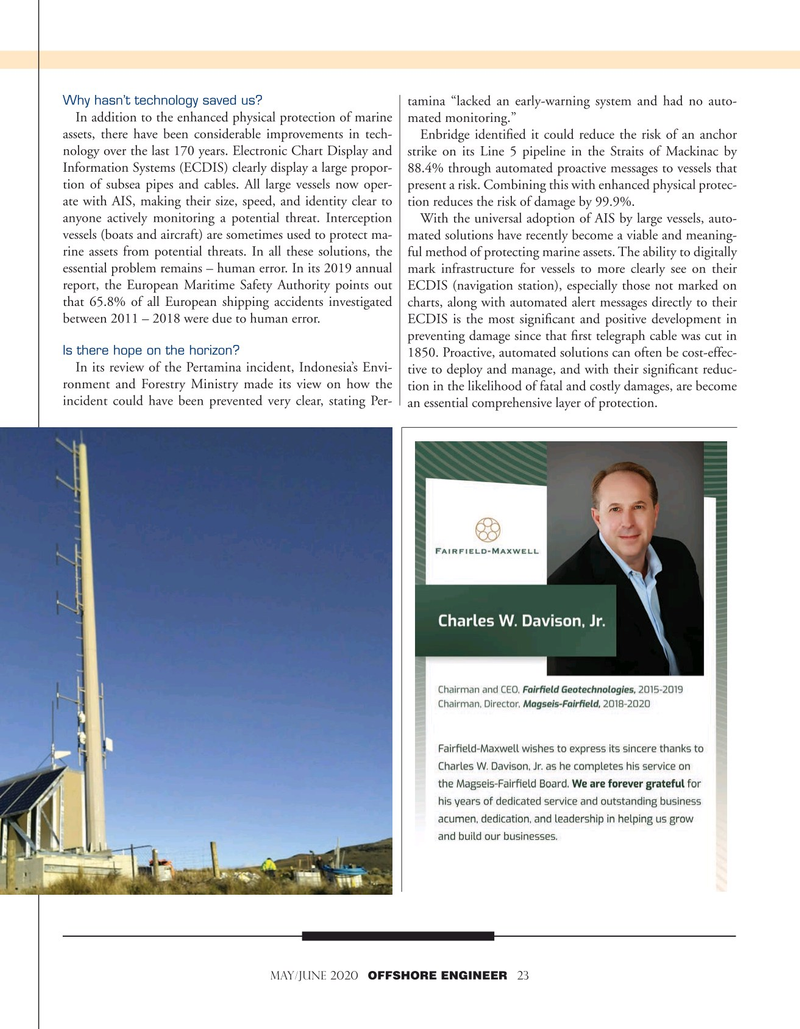
Page 23: of Offshore Engineer Magazine (May/Jun 2020)
Read this page in Pdf, Flash or Html5 edition of May/Jun 2020 Offshore Engineer Magazine
Why hasn’t technology saved us?
tamina “lacked an early-warning system and had no auto-
In addition to the enhanced physical protection of marine mated monitoring.” assets, there have been considerable improvements in tech- Enbridge identifed it could reduce the risk of an anchor nology over the last 170 years. Electronic Chart Display and strike on its Line 5 pipeline in the Straits of Mackinac by
Information Systems (ECDIS) clearly display a large propor- 88.4% through automated proactive messages to vessels that tion of subsea pipes and cables. All large vessels now oper- present a risk. Combining this with enhanced physical protec- ate with AIS, making their size, speed, and identity clear to tion reduces the risk of damage by 99.9%.
anyone actively monitoring a potential threat. Interception With the universal adoption of AIS by large vessels, auto- vessels (boats and aircraft) are sometimes used to protect ma- mated solutions have recently become a viable and meaning- rine assets from potential threats. In all these solutions, the ful method of protecting marine assets. The ability to digitally essential problem remains – human error. In its 2019 annual mark infrastructure for vessels to more clearly see on their report, the European Maritime Safety Authority points out ECDIS (navigation station), especially those not marked on that 65.8% of all European shipping accidents investigated charts, along with automated alert messages directly to their between 2011 – 2018 were due to human error. ECDIS is the most signifcant and positive development in preventing damage since that frst telegraph cable was cut in
Is there hope on the horizon?
1850. Proactive, automated solutions can often be cost-effec-
In its review of the Pertamina incident, Indonesia’s Envi- tive to deploy and manage, and with their signifcant reduc- ronment and Forestry Ministry made its view on how the tion in the likelihood of fatal and costly damages, are become incident could have been prevented very clear, stating Per- an essential comprehensive layer of protection.
MAY/JUNE 2020 OFFSHORE ENGINEER 23

 22
22

 24
24